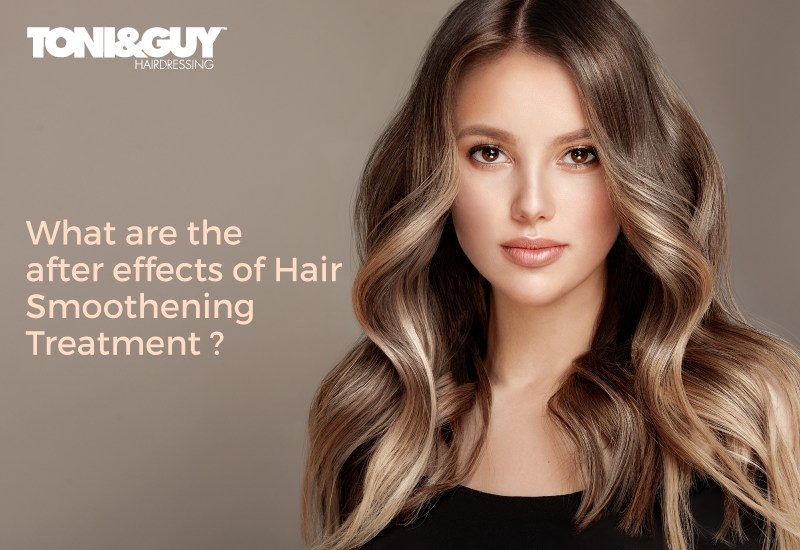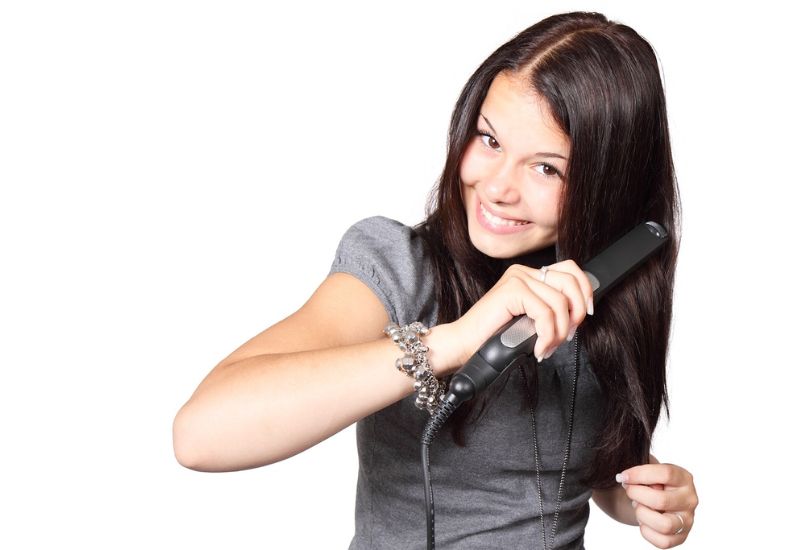
Introduction
A standard option for getting sleek, frizz-free locks is hair smoothing treatments, which apply chemical compositions to change the texture of the hair. Thanks to its transformational effects, this treatment has become increasingly popular, giving people manageable and smooth hair.
There are several things to keep in mind despite the treatment’s attraction. We aim to investigate the possible side effects by providing information to anyone who is considering or has recently undergone hair smoothing.
Our goal is to offer extensive guidance for well-informed decision-making in the pursuit of silky, groomed hair, including everything from transient texture changes to potential effects on overall hair health.
The Process of Hair Smoothening

The revolutionary cosmetic procedure of hair smoothing is intended to improve the texture of hair and control frizzed-out locks. To control frizz and give the hair a sleek, silky finish, the treatment applies certain chemical formulas to change the natural structure of the hair. In order to seal in the product, the technique usually entails washing, applying the smoothing solution, and heat styling.
There are several different kinds of hair smoothing treatments on the market, including Japanese hair straightening, Brazilian blowouts, and Keratin treatments. Every variety differs in the substances employed and the level of straightening attained, giving people a variety of choices to fit their hair type and desired outcomes.
Popular Hair Smoothening Brands
Effective hair smoothing solutions are offered by a number of respectable brands that are well-known for their distinctive formulas and cutting-edge technologies.
Global brands that offer salon-caliber products, such as Brazilian Blowout, Kerastase, and L’Oreal Professionnel, control this market. Innovative smoothing complexes, keratin, and amino acids are among of the cutting-edge substances these firms use to tame frizz, reduce volume, and improve overall hair manageability.
The formulas put efficacy and hair health first, guaranteeing that users get sleek, glossy hair without sacrificing the integrity of their hair. Customers can make decisions that are well-informed and cater to their unique requirements and intended results by investigating these brands.
Temporary Changes

People can anticipate noticeable, transient improvements following hair smoothing, such as a substantially smoother texture, less frizz, and improved shine. These effects help create a professional, put-together appearance.
But it’s important to realise that the treatment’s effects are just temporary; depending on the exact smoothing procedure selected, the duration of the effects might range from a few weeks to several months.
A return to the natural texture of the hair may occur when the therapy progressively wears off. For anyone thinking about getting their hair smoothed or who is already getting it done, controlling expectations about how long these transient changes will last is essential.
Impact on hair health
Hair smoothing procedures have the potential to harm hair cuticles and cause protein loss, which could have an adverse effect on hair health. Because of the potential for the chemical treatments to compromise the structural integrity of the hair, preventative maintenance steps must be taken.
People are recommended to utilise moisturising, sulfate-free hair care products, refrain from overusing heat styling, and schedule frequent deep conditioning treatments in order to minimise any potential harm.
Sustaining a well-balanced diet high in vitamins and protein promotes general hair health. These suggestions assist people in finding a balance between maintaining the vitality of their hair strands and having sleek, styled hair.
Allergic Reactions and Sensitivity

It is important to recognise that the chemicals used in hair smoothing treatments may cause allergic responses or sensitivities. Certain chemicals can cause undesirable skin reactions, irritation of the scalp, or respiratory sensitivities in some people.
Dermatologists and stylists advise performing patch testing prior to receiving the entire treatment as a preventative step.
This small-scale test aids in the detection of any negative effects and enables patients to decide with knowledge whether to continue receiving the medication.
Patch testing, which prioritises safety, guarantees a proactive approach, reducing the possibility of adverse reactions and fostering a safer experience for people thinking about hair smoothing.
Post-Treatment Hair Care Routine
A careful post-treatment hair care regimen is necessary to preserve the effects of hair smoothing. Choose shampoos and conditioners without sulfates, as they can eliminate the advantages of the therapy.
Frequent deep conditioning aids in regaining nutrition and moisture. Preserving the integrity of treated hair while styling can be achieved by air-drying or applying low-heat settings.
To further improve smoothness, spend money on serums or leave-in conditioners. Select hair care products designed especially for chemically treated hair, paying particular attention to components like argan oil or keratin.
People can ensure a sleek, long-lasting finish and extend the lifespan of their smoothing effects by implementing these recommendations into a personalised hair care regimen.
Professional Advice and Follow-ups at Toni & Guy Salon

For individualised care at Toni & Guy Salon, speaking with a skilled stylist after hair smoothing is essential. Our knowledgeable stylists address specific concerns and provide individualised guidance for the best upkeep, as well as insights into treatment outcomes.
Appointments for follow-up care are carefully planned to allow for any necessary modifications and extra treatments, guaranteeing that your hair stays healthy and retains the sleek finish you prefer.
Toni & Guy Salon’s focus on professional competence upholds our commitment to long-term hair health, style, and customer happiness, resulting in a flawless and reliable post-smoothening care experience.
Conclusion
Navigating the aftermath of a hair-smoothing procedure necessitates a sophisticated comprehension of the advantages and possible disadvantages. Even though the instant effects provide a smoother texture and less frizz, it’s important to recognise that these are only transient alterations.
Making educated decisions is essential, and people should consider the potential effects on hair health as well as the transforming results.
Creating a custom post-treatment hair care regimen under the guidance of a professional becomes essential to guarantee long-lasting, healthy, and gorgeous results. A confident and knowledgeable approach to the realm of hair smoothing is heralded by striking this equilibrium.
FAQs
- Does hair smoothening have side effects?
Yes, there may be adverse effects from hair smoothening. Damage to hair cuticles, loss of protein, and the possibility of chemical allergies are some possible negative effects. It’s important to take these things into account before choosing a treatment.
It is advised to have professional consultations, patch testing, and a customised post-treatment care regimen to minimise any potential adverse effects and guarantee the greatest results for the health of your hair.
- Does hair go back to normal after smoothening?
Yes, as the effects of a smoothening treatment wear off, hair usually returns to its original texture. Depending on the particular treatment, the effects can range from a few weeks to several months.
The natural texture eventually reappears as the treated hair grows. Following smoothing, a good hair care regimen can reduce damage and facilitate the return of the hair to its natural state.
- Is smoothening good for hair or not?
Smoothening your hair can improve its texture and lessen frizz for short-term advantages. On the other hand, it involves chemical reactions, including protein loss and cuticle damage that could potentially cause harm. Smoothening should only be chosen after careful consideration of the intended results and any possible effects on the health of the hair.
- What should I avoid after hair smoothening?
Don’t wash your hair for the suggested amount of time after having your hair smoothed (typically 48–72 hours). To prolong the treatment’s life, use less heat styling tools and choose sulfate-free, soft hair care products.
To maintain the smoothing effects, reduce exposure to chlorine, saltwater, and harsh environmental conditions.
- Can I oil my hair after smoothening?
Oiling your hair right away after smoothening is advised because some treatments need time to set. For precise advice based on the kind of smoothening procedure you’ve had, speak with your stylist. They can offer you specific advice on when to resume oiling your hair once it has been smoothed.


